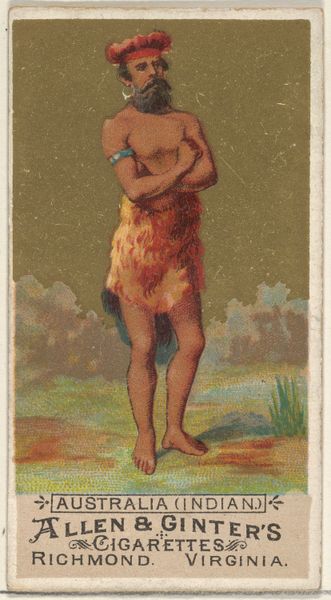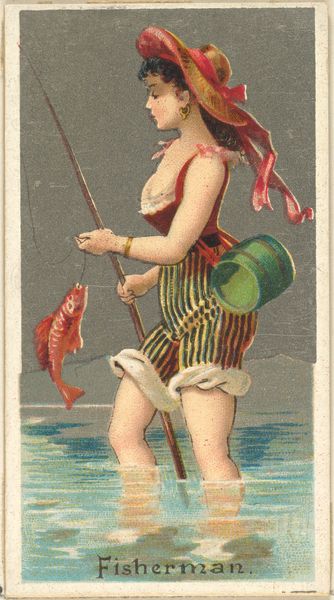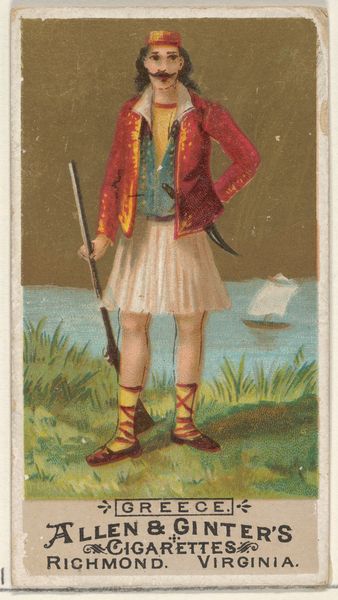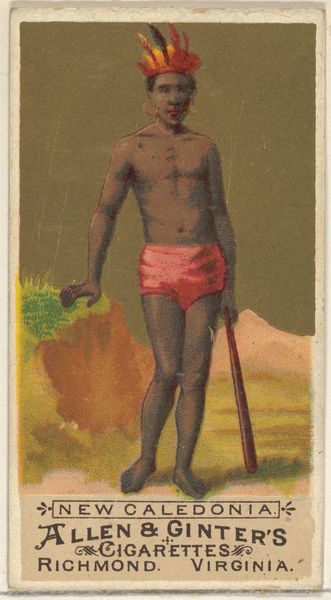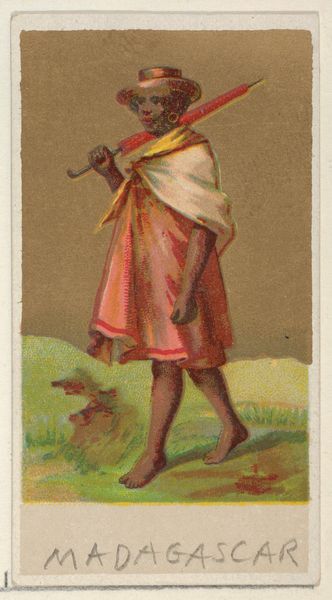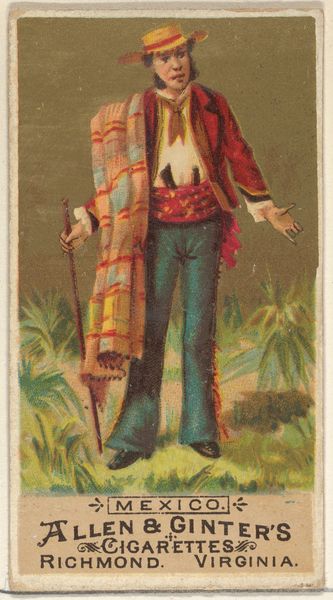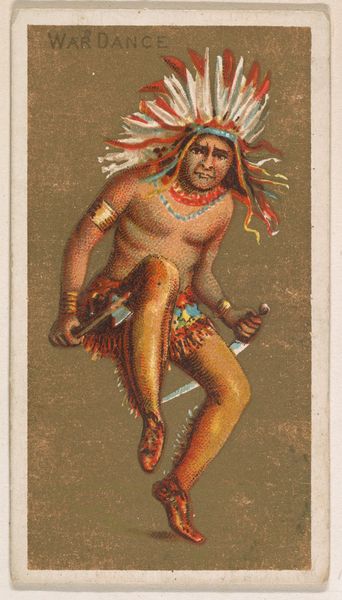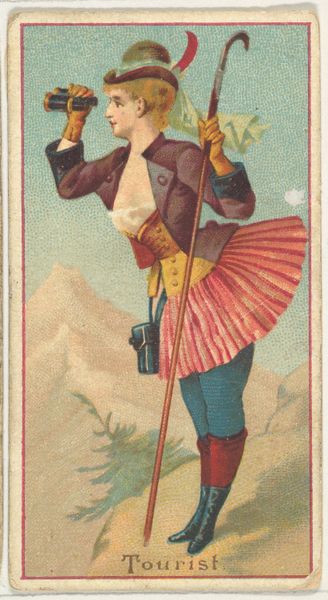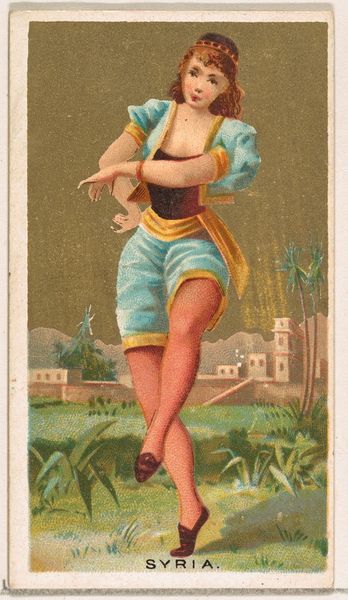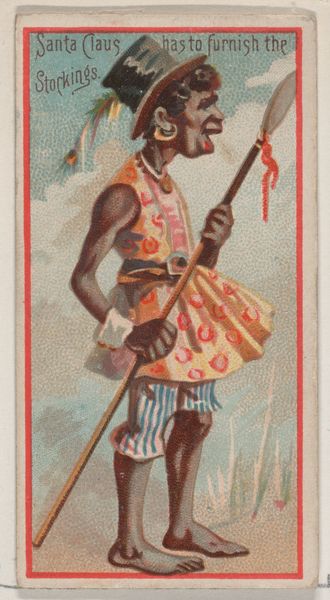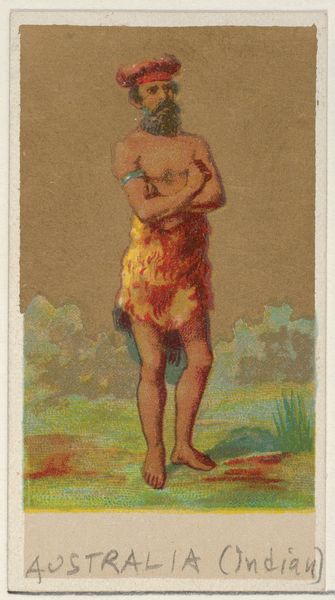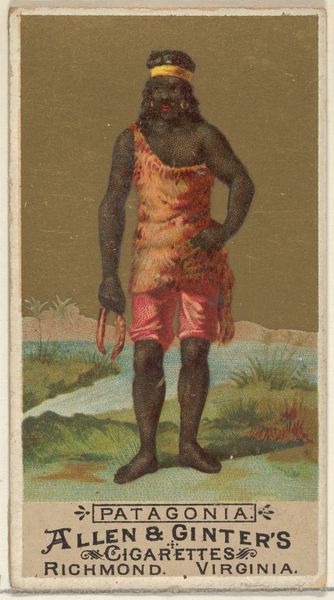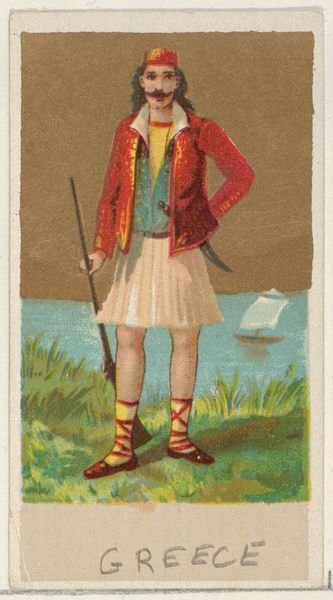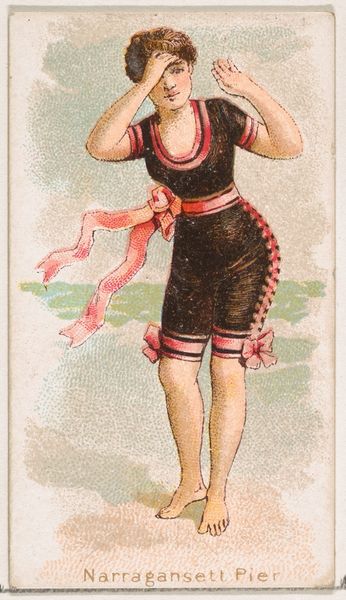
Zululand, from the Natives in Costume series (N16) for Allen & Ginter Cigarettes Brands 1886
0:00
0:00
drawing, coloured-pencil, print, photography
#
drawing
#
coloured-pencil
# print
#
caricature
#
caricature
#
photography
#
coloured pencil
#
folk-art
#
orientalism
Dimensions: Sheet: 2 3/4 x 1 1/2 in. (7 x 3.8 cm)
Copyright: Public Domain
Editor: Here we have "Zululand, from the Natives in Costume series," made in 1886 by Allen & Ginter using colored pencils and printmaking. I’m struck by the way this image flattens a complex culture into a sort of simplified character. What symbols jump out at you? Curator: Instantly, the spear and shield become loaded emblems. The spear, a phallic symbol representing power and virility, intersects with the shield. Do you see how it simultaneously suggests protection and defense, perhaps guarding against external threats but also internal vulnerabilities? Editor: That's interesting; I hadn’t considered the spear in that light. I was thinking of it more as a symbol of aggression, but the protection aspect makes sense. Curator: Indeed, consider that the artist likely had no deep knowledge of Zulu culture. They grasped at these symbols to embody an entire people, perpetuating existing power dynamics. How do the colours contribute to that symbolic framework? Editor: The vibrant red and yellow do seem almost stereotypical, giving a sense of "exoticism" which feels forced. And the man's dark skin is set against the bland background and colours, emphasizing the figure as 'Other'. Curator: Precisely! The colour and costume, even the backdrop of unspecified ‘nature,’ are rendered flat and superficial, perpetuating what Edward Said called “Orientalism”—reducing a diverse culture to easily consumable signs for Western audiences. It invites viewers to passively accept and never question such simplification. Editor: So, it’s like a packaged cultural product? Curator: Exactly. This image is less about Zulu culture and more about how it was being marketed and consumed at that moment in history through a simplified language of symbolic exoticism. It served commercial and ideological agendas. Editor: It’s eye-opening to see how much cultural baggage is embedded in what seems like a simple image. It is about commerce, culture, and history!
Comments
No comments
Be the first to comment and join the conversation on the ultimate creative platform.
